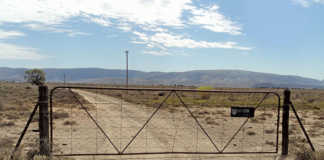
Photo: Wikimedia Commons
A business plan is a comprehensive written document that outlines a business’s goals and the strategy for achieving them.
It serves as a roadmap for the business, providing a detailed overview of various aspects of the business, including its mission, vision, products or services, market analysis, competition, financial projections, and operational plans.
READ What are the objectives of your business plan?
A well-prepared business plan helps guide decision-making, secure financing, and communicates the business’s objectives and strategies to stakeholders.
Elements of a business plan
These are the key components of a business plan.
An executive summary. This is a concise summary of the entire business plan, highlighting the most critical points, including the business’s mission, key objectives, and summary financial projections.
A business description. This offers an overview of the business, including its legal structure, location, history, ownership, and a description of its products or services.
A market analysis. This is a detailed analysis of the industry and market in which the business operates. For example, if you are farming sheep for wool production, you need to include a detailed market analysis of the wool market in South Africa and abroad. This section includes information on market size, growth trends, target audience, customer needs, and the competitive landscape.
Competitive analysis. This offers an examination of competitors, their strengths and weaknesses, market share, and strategies. It should outline your business’s unique selling points and competitive advantages.
Value proposition. This explains what makes the business unique and why customers should choose your products or services over alternatives. In other words, what makes your farming business unique?
Business strategy. This is a description of the business’s overall strategy for achieving its goals. This section may include information on marketing, sales, distribution, pricing, and branding strategies.
Products and services. This is a detailed explanation of the products or services offered by the business, including their features, benefits, and any intellectual property considerations.
Operational plan. This includes information about how the business operates day-to-day, including production processes, supply chain management, staffing, and facility requirements.
Management team. In this section, you should profile key team members, their qualifications, roles, and responsibilities within your business.
Financial projections. Here, you need to offer detailed financial forecasts, including income statements, balance sheets, cash flow statements, and break-even analysis. This section often includes assumptions used in the projections.
Funding request. This is particularly relevant when asking for funding. Here, you need to provide the possible lender with information about the amount of financing needed, how it will be used, and the expected return on investment for potential investors or lenders.
Exit strategy. This is applicable if you have investors or stakeholders, and details how they can expect to realise a return on their investment should the business fail, such as through a sale of the business, public offering, or other means.
Appendices. Finally, you need to include supporting documents, such as market research data, résumés of key team members, legal documents, patents, and any additional information that supports the business plan.
Why do you need a business plan?
A business plan serves multiple purposes. It provides a framework for setting and achieving business goals, helping the management team stay focused on key objectives.
If you need funding or investors, a business plan is a crucial first step to securing such funding.
A good business plan demonstrates the business’s potential for success and its ability to generate returns, which is critical to entice financial institutions or other investors to put money into your business.
It is important to remember that a business plan is not only useful for applying for finance, but also serves an essential purpose for the management of your business.
A business plan, for example, can be used to track progress and hold the management team accountable for meeting financial and operational targets. Essentially, it serves as a blueprint for the goals of the business, and aids in informed decision-making by providing a comprehensive view of the business’s current status and future prospects.
Why do financial institutions require a business plan?
Investors and financial institutions will most likely require a business plan before offering you a finance solution.
A well-prepared business plan provides important information to lenders, investors and other stakeholders, helping them assess the viability and risk associated with your business.
These institutions will use the business plan when conducting a risk assessment of your business. A risk assessment allows lenders to assess the level of risk associated with providing financing to your business.
READ Get credit! Tips on writing a business plan for your farm
As the business plan outlines your business model, market analysis, competitive landscape and financial projections, it allows them to more speedily evaluate the potential risks and rewards. Before offering funding, financial institutions need to determine if your business concept is viable and has a realistic chance of success.
A business plan provides details about your product or service, target market and growth potential, helping lenders gauge the feasibility of your business.
Lenders also need to understand how your business intends to generate revenue and cash flow to repay the loan or meet other financial obligations. Your business plan should include financial projections, including income statements, balance sheets and cash flow statements to demonstrate your ability to service debt.
Lastly, a business plan clarifies the purpose of the loan or financing. Whether you need funds for start-up costs, expansion, working capital or a specific project, the plan outlines how the funds will be used and how they will benefit the business.
Developing a business plan
Developing a business plan for consideration by a financial institution, such as a bank or credit union, requires a structured approach.
- Step 1: The executive summary
Begin with a concise executive summary that provides an overview of your financial institution. In this section, include the institution’s name, location, mission statement, and a brief summary of the plan’s key highlights. - Step 2: Business description
You now need to offer a detailed description of your farming operation. Explain the type of farming you are embarking on or currently running, and the specific products you intend to produce. - Step 3: The market and competitor analysis
As mentioned above, you need to include a thorough market analysis. For this section, you can include surveys and other data sets that show your understanding of the market, and that there is a gap to be exploited. In this section, you also need to include your competitor analysis. Who are your competitors? What will you be doing differently to attract customers or offtake agreements? - Step 4: Value proposition
Here, clearly articulate what sets your farm apart. Explain your unique selling points, such as sustainable practices, product quality, or niche markets you serve. - Step 5: Business strategy
Describe your overall strategy for running the farm. Discuss your production methods, pricing strategy, distribution channels, and marketing efforts. - Step 6: Operational plan
In this section, provide details about the day-to-day operations of your farm, including land management, crop or livestock care, equipment and machinery use, and labour requirements. Describe your supply chain and any partnerships with suppliers or distributors. - Step 7: Financial projections
Present detailed financial projections, including income statements, balance sheets, and cash flow statements. Use realistic assumptions, including production yields, pricing and expense estimates. Include a break-even analysis and a capital expenditure plan if applicable. - Step 8: Resource management
In this section, explain how you plan to manage key resources, including land, water, energy and labour. Discuss sustainability practices and conservation efforts. Outline your pest and disease management strategies where applicable. - Step 9: Marketing and sales strategy
Describe your marketing and sales plan. Include details on how you will promote your products, pricing strategies, and sales channels, such as farmers’ markets, local retailers, and online sales. Highlight any branding efforts and customer engagement initiatives. - Step 10: Risk assessment and mitigation
Identify potential risks and challenges that could impact your farming business. Explain how you plan to mitigate these risks. Consider factors such as adverse weather conditions, disease outbreaks, market fluctuations, and regulatory changes. - Step 11: Legal and regulatory compliance
Ensure that your business plan addresses all legal and regulatory requirements specific to farming, including permits, licences and environmental regulations. - Step 12: Environmental and sustainability practices
This may not be applicable for all operations, but considering the push towards a greener future, it may be worth your while to detail your commitment to environmental stewardship and sustainable farming practices. Explain how you plan to minimise environmental impact and promote sustainability. - Step 13: Management team
Introduce key members of your management team, including their roles, qualifications and responsibilities. Include résumés as needed. Also explain how they will drive your business towards reaching its goals. - Step 14: Appendices
Finally, include any supplementary materials, such as market research data, soil test results, crop rotation plans, photographs, or additional financial details, in appendices.
Don’t forget to regularly review and update your business plan to reflect changing conditions, market dynamics, and strategic shifts in your farming business.
If you feel unable to put together a well-developed business plan, you could always rely on the services of external companies.










